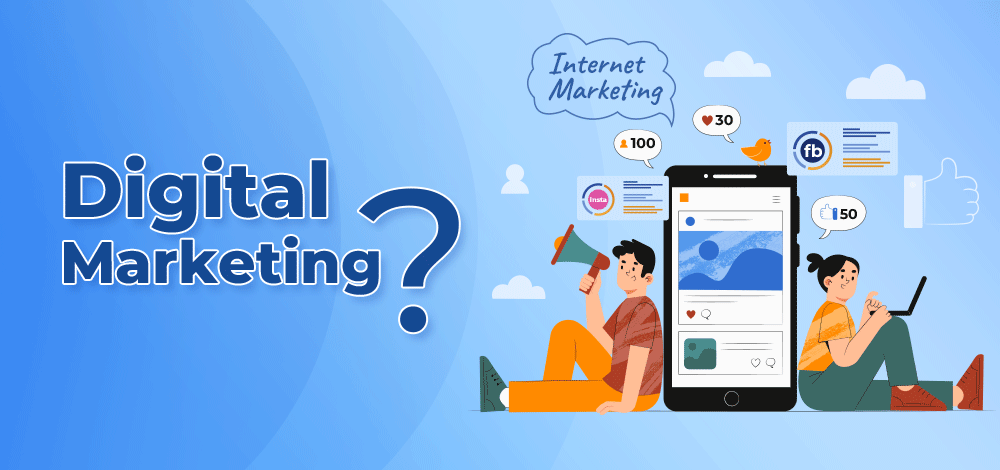
In today’s competitive marketplace, understanding the key concepts of marketing is essential for any business looking to unlock its full potential. From product development to customer acquisition and retention, these concepts form the foundation for successful marketing strategies. In this comprehensive guide, we delve into four key concepts that can empower businesses to reach their goals.
Firstly, brand identity plays a crucial role in shaping consumers’ perception of a company. By developing a strong and consistent brand voice, businesses can build trust and establish a unique position in the market. Secondly, market segmentation helps target specific customer groups with tailored marketing messages and offerings, leading to higher conversion rates. Thirdly, effective marketing communication involves crafting compelling messages that resonate with the target audience. Finally, customer relationship management enables businesses to build long-term relationships with customers through personalized experiences.
By unlocking the power of these four key concepts, businesses can gain a competitive edge and drive sustainable growth. Whether you’re a seasoned marketer or just starting out, this guide will provide you with valuable insights and actionable strategies to maximize your marketing efforts.
Understanding the concept of product in marketing
When it comes to marketing, the concept of product refers to more than just a physical item or service. It encompasses everything that a business offers to its target market to fulfill their needs and wants. This includes not only the tangible features of a product but also the intangible benefits and the overall customer experience.
To effectively leverage the concept of product in marketing, businesses must focus on developing offerings that meet the needs and desires of their target audience. This involves conducting market research to understand customer preferences, staying up to date with industry trends, and continuously innovating to stay ahead of the competition.
By understanding the concept of product and aligning their offerings with customer needs, businesses can create a strong value proposition that sets them apart from competitors. This will not only attract new customers but also foster loyalty and repeat business.
The importance of price in marketing
Price is a critical component of the marketing mix and plays a significant role in shaping consumer behavior. It directly affects a business’s profitability, market positioning, and perceived value. Setting the right price is a delicate balancing act that requires careful consideration of various factors, including costs, competition, and customer perceptions.
When determining the price of a product or service, businesses must consider the value it delivers to customers. If the price is too high, customers may perceive it as overpriced and seek alternatives. On the other hand, if the price is too low, customers may question the quality or value of the offering.
Pricing strategies can vary depending on the business’s goals and market dynamics. Some businesses opt for a cost-based pricing approach, where the price is determined by adding a markup to the production or service costs. Others adopt a value-based pricing strategy, where the price is set based on the perceived value to the customer.
The role of promotion in marketing
Promotion encompasses all the activities businesses undertake to communicate and promote their offerings to the target audience. It involves creating awareness, generating interest, and ultimately driving action. Effective promotion is crucial for attracting new customers, building brand equity, and increasing sales.
One of the key aspects of promotion is developing a compelling message that resonates with the target audience. This involves understanding their needs, desires, and pain points and crafting messages that address these effectively. The message should highlight the unique selling points of the offering and clearly communicate its benefits.
Promotion channels have evolved significantly with the rise of digital marketing. Businesses can now leverage various platforms, including social media, search engines, email marketing, and content marketing, to reach their target audience. It is essential to select the right channels based on the target audience’s preferences and behavior to maximize the impact of promotional efforts.
The significance of place in marketing
Place, also known as distribution, refers to the process of getting the product or service from the producer to the consumer. The right distribution strategy ensures that the offering is available to customers when and where they need it. It involves selecting the appropriate distribution channels, managing inventory, and optimizing logistics.
Choosing the right distribution channels depends on various factors, including the nature of the product, target market characteristics, and competitive dynamics. Businesses can opt for direct distribution, where they sell directly to customers, or indirect distribution, where they utilize intermediaries such as retailers, wholesalers, or distributors.
In addition to selecting the right channels, businesses must also ensure efficient and reliable delivery to meet customer expectations. This involves managing inventory levels to avoid stockouts or overstocking, optimizing supply chain processes, and providing timely and accurate order fulfillment.
Applying the 4 key concepts of marketing in your business
Now that we have explored the four key concepts of marketing – product, price, promotion, and place – it’s time to put them into action in your business. To effectively apply these concepts, it is important to have a strategic marketing plan that aligns with your business goals and target market.
Start by conducting thorough market research to understand your target audience’s needs, preferences, and behavior. This will help you develop a clear value proposition that addresses their pain points and differentiates you from competitors.
Next, focus on product development, ensuring that your offerings meet the needs and desires of your target market. Continuously innovate and improve to stay ahead of the competition and deliver exceptional value to your customers.
Pricing is a critical aspect of your marketing strategy. Analyze your costs, competition, and customer perceptions to set the right price that reflects the value you deliver. Consider different pricing strategies and monitor their impact on customer behavior and profitability.
When it comes to promotion, craft compelling messages that resonate with your target audience. Leverage various marketing channels, both online and offline, to reach your customers effectively. Monitor and analyze the performance of your promotional efforts to optimize your marketing campaigns.
Lastly, ensure that your distribution strategy aligns with your target market’s preferences and behavior. Select the right channels, manage inventory effectively, and optimize your logistics to provide a seamless and convenient customer experience.
Case studies: Successful marketing campaigns using the 4 key concepts
To further illustrate the power of the four key concepts of marketing, let’s take a look at some successful marketing campaigns that have effectively applied these concepts.
1. Apple’s iPhone: Apple has built a strong brand identity and consistently delivers innovative and high-quality products. Their pricing strategy reflects the premium value they offer, positioning them as a luxury brand. Apple’s promotion efforts focus on creating buzz and anticipation around product launches, generating significant demand. Their distribution strategy ensures that their products are available in their own retail stores, as well as through authorized resellers, maximizing accessibility.
2. Coca-Cola’s “Share a Coke” campaign: Coca-Cola leveraged the concept of product by personalizing their bottles with individual names, creating a unique and personalized customer experience. The pricing strategy remained consistent, ensuring affordability and value for money. Their promotion efforts focused on creating emotional connections and encouraging customers to share their experiences, driving word-of-mouth marketing. Coca-Cola’s distribution strategy ensured that their products were available in various locations, including supermarkets, convenience stores, and vending machines.
Common mistakes to avoid when implementing the 4 key concepts of marketing
While the four key concepts of marketing are powerful tools, it is important to avoid common mistakes that can hinder their effectiveness. Here are some pitfalls to watch out for:
1. Inconsistent brand identity: Failing to maintain a consistent brand voice and image can confuse customers and dilute your brand equity. Ensure that all marketing efforts align with your brand values and consistently communicate your unique selling proposition.
2. Poor pricing strategy: Setting the wrong price can lead to lost sales and decreased profitability. Conduct thorough market research, analyze costs, and monitor customer perceptions to set the optimal price that reflects the value you deliver.
3. Ineffective promotion: Crafting compelling messages and selecting the right marketing channels are essential for effective promotion. Avoid generic or irrelevant messages that fail to resonate with your target audience. Additionally, choose channels based on your target market’s preferences and behavior.
4. Inefficient distribution: Poor inventory management, unreliable logistics, and inadequate distribution channels can result in missed opportunities and dissatisfied customers. Optimize your distribution strategy to ensure that your offerings are readily available to customers when and where they need them.
Tools and resources to help you leverage the 4 key concepts of marketing
Implementing the four key concepts of marketing can be complex, but there are various tools and resources available to help you navigate the process. Here are a few worth considering:
1. Market research tools: Use market research tools to gather data and insights about your target audience, industry trends, and competitor analysis. Tools like Google Trends, SurveyMonkey, and SEMrush can provide valuable information to guide your marketing strategy.
2. Pricing analysis tools: Pricing analysis tools can help you analyze costs, competitor prices, and customer perceptions to set the optimal price for your offerings. Tools like PriceIntelligently and ProfitWell can provide valuable insights and recommendations.
3. Marketing automation platforms: Marketing automation platforms can streamline your promotional efforts, allowing you to automate tasks, segment your audience, and personalize your messages. Popular platforms include HubSpot, Marketo, and Mailchimp.
4. Distribution management systems: Distribution management systems can help you optimize your inventory levels, manage logistics, and streamline your distribution processes. Tools like Oracle SCM Cloud, SAP Extended Warehouse Management, and Zoho Inventory can enhance your distribution strategy.
Conclusion: Harnessing the power of the 4 key concepts of marketing for business success
The four key concepts of marketing – product, price, promotion, and place – are essential for businesses looking to unlock their full potential. By understanding and effectively applying these concepts, businesses can gain a competitive edge, build strong customer relationships, and drive sustainable growth.
It is important to remember that these concepts are interconnected and should be considered holistically when developing your marketing strategy. Continuously monitor and analyze the performance of your marketing efforts, adjust your strategies as needed, and stay ahead of industry trends to ensure long-term success.
Whether you’re a seasoned marketer or just starting out, this comprehensive guide provides valuable insights and actionable strategies to maximize your marketing efforts. By unlocking the power of the four key concepts of marketing, you can propel your business towards success in today’s dynamic marketplace.




